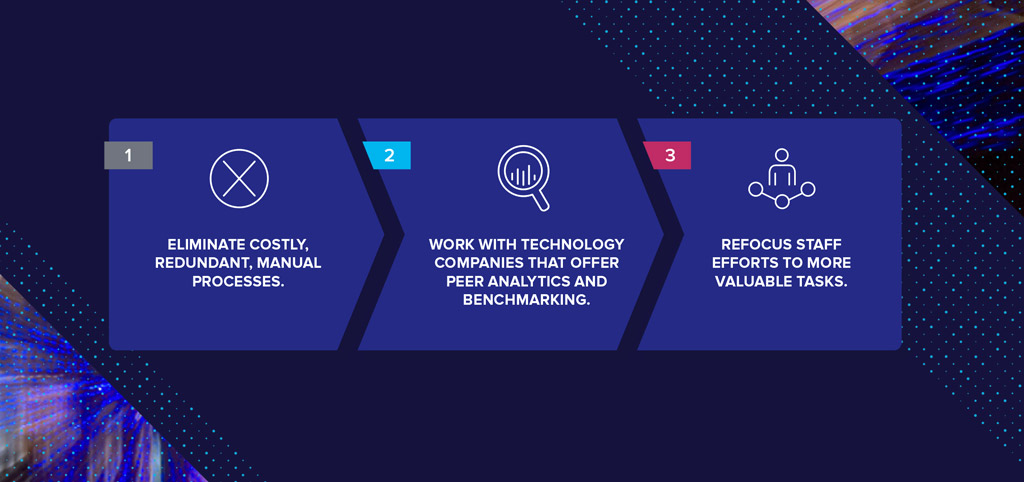Blog
3 Steps to Profitable Engineering with Construction Materials Testing Software


When you begin working with a construction materials testing software, one of the first things you want to do is identify best practices and workflows. In several cases, you might have workflows that have worked well for the past 20 years. When adopting technology and considering automating and standardizing processes, you might consider altering business practices to create additional efficiencies.
Experienced software firms should be able to assist you with identifying workflows that might be beneficial towards your business and shed light on use cases that may go beyond your original intent to further increase your value and efficiency.
The first step is to look for ways to eliminate redundancy and manual data entry or handoffs. There’s a clear loss of efficiency if you’re handing things off from point A to point B and doing repetitive tasks along the way.
Before you can truly eliminate costs, you must first identify them. Consider what the technology is going to allow you to do. One of the most time-consuming activities is data entry. In some cases, you can’t get around that. What’s worse is when you must reformat data, restructure, scan something, etc., because that’s really where the inefficiencies start to amplify. Even in today’s world, writing a simple email and attaching content can take valuable time. Now, consider how often that’s done on a given day, and the number of handoffs, rework, or formatting that goes into creating the content within each deliverable.
Consider other areas in your daily operations that are eating away at time because you have disjointed systems. How long does it take to look for project information? Are you manually tracking samples in your lab? How much onboarding and training happens annually? How many units, samples, or work orders are left ignored each year? If these questions can’t necessarily be quantified because you don’t know or they’re too high, that might be an indication there’s room for improvement.
When you’re selecting vendors, many times companies will allow you to benchmark your processes against peers or near-adjacent markets. Benchmarking gives you the opportunity to step back and evaluate your organization and identify areas of efficiency that you excel in, as well as areas that maybe you could revisit and create different workflows or processes to become more efficient. Talk to your various technology vendors and determine if they can benchmark themselves against their peers.
Benchmarking also provides insight towards internal organizational metrics that might not have been possible before. Whether it’s annual reviews at a company or employee level, you might be able to access key performance indicators and operational insights and leverage those towards more accurate forecasting, planning, and support throughout your firm.
When you’re reevaluating your business processes and workflows, there’s an inherent opportunity to shift staff and their focus or re-enable them. If you’re doing something more efficiently, you have the option to move a staff person into a more valuable role within your organization or, apply that individual’s time towards more billable or flexible activities.
The important factor is that some tasks are valuable because of the people or effort behind them. Valuable tasks are typically accomplished by an individual and their human skill set. By valuing skills of people and achieving more billable activity or revenue generating services instead of mundane tasks, you’re profiting more financially, and interpersonally valuing an individual’s contributions. Consider that it’s typically our skills and experience on a resume. When our daily activity consists of scanning reports or re-entering data without critical thought of our own, those are often byproducts of a role itself. The value lies in how we define our identity and what we do as professionals. When we think about valuable activities, technology should enable our skill set and experience and continue to ignite the interests and curiosity that led to our respective careers in the first place.
Furthermore, if you have technology that allows your company to position your focus towards outcomes that might require less activity, you may have the opportunity for your staff to do more outside of work. If you have the tools to work and live on the go, staff will have a more flexible lifestyle, which may help with talent attraction and retaining high quality employees. When staff can value life outside of work and balance their personal and professional lives, it’s another way of saying they are valued and appreciated as an employee, which is typically your most valuable asset.
Learn how construction materials testing software can not only help make you more profitable, but also help empower your office and field staff, and drive additional value to your clients in our new guide. In the guide we explore how technology can unlock growth through flexible and efficient workflows, and we include a BONUS worksheet to help you audit where your firm stands today.
